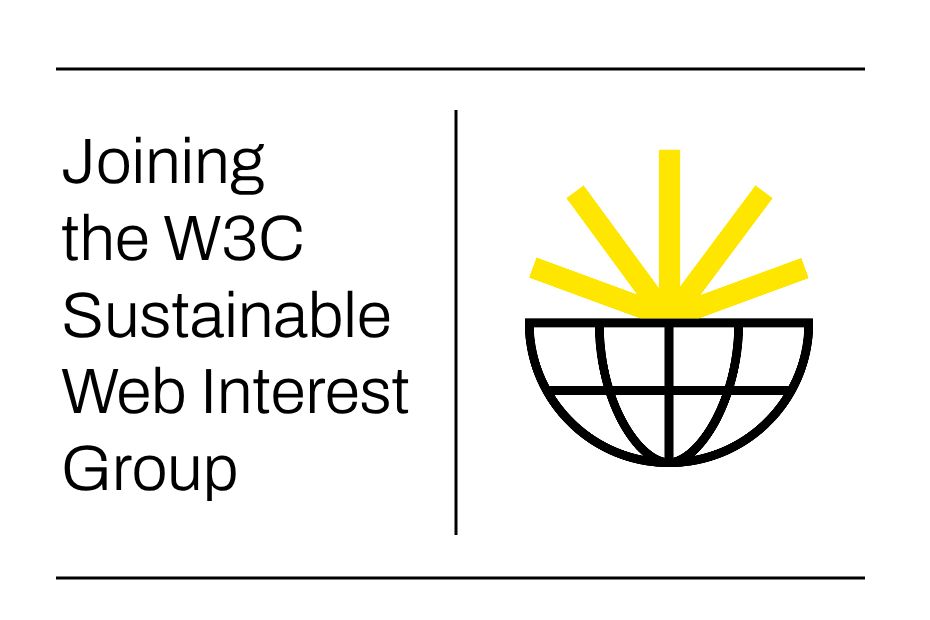Last month, we introduced our new grid-aware websites project, explaining the goals, the approach we’re taking and its advisory board. This month, we gave our first talk introducing “grid-aware” at the Green Software Development Karlsruhe hybrid meetup. Just over 50 developers joined, from the surrounding area and globally via Zoom. Read on to find out more.
Why speak at the Green Software Development Karlsruhe meetup?
While we’re technically a Dutch nonprofit, we have an international team, and we serve an international community. Karlsruhe in Germany is one such community, with a thriving tech sector – and as we learned recently, a whole “Decarbonise your Software” initiative from the local government, with mentoring for local companies, in the form of the CO2 challenge. Not bad!
Earlier this year, we also found out that one of the companies there, Bluehands GmbH, had been doing some really cool open source digital sustainability projects. Want some examples? How about an entirely browser-based website-carbon meter, using real time grid carbon intensity figures? Or an entirely free grid forecast service for computing, using totally open data, for all of Europe? Once you know to start looking, there are all kinds of interesting pockets of expertise and interest in digital sustainability all around the world, and it turns out Karlsruhe is no exception.
Anyway, some folks at Bluehands organise the developer meetup for Green software in Karlsruhe, so when the meetup organisers asked if we’d be up for dropping by to talk about grid-aware software, it was an easy thing to agree to.
What did we speak about?
Unsurprisingly, we spoke about our project, and grid-aware software in the wider sense. If you want a fossil free internet, you gotta talk about grids.
You can see the deck we presented below. When the deck isn’t explaining some of the parts of the grid aware websites project, it’s introducing and linking to existing live projects in the field of digital sustainabilty, or particulary insightful papers and writing for people interested in grid-aware software. Follow the link to see the full deck on from Google Slides.

We also shared a short demo of the work in process, as we work in the open on github. It’s important to understand that these is still pre-beta work under active development – so please do not rely on this in production, and it’s still very early days, but if you want to follow along, and play with the code, you can.

How did people respond to this grid-aware thing?
Broadly speaking, positively (phew!).
In the Q and A after the talk there was a discussion about making things like websites that look like they’re responding to conditions on the grid, but don’t, vs ones that actually do – and how hard it can be to tell these apart.
Because electricity is invisible, and broadly speaking, the metrics you might use to see changes aren’t published by companies who services you use, it’s quite difficult to tell if there really are changes being made along the supply chain or not. More transparency would be nice in this field, but to be fair, it’s not always clear what metrics companies should be exposing yet – we’re hoping to share more as we learn by doing in 2025.
There was also of agreement that if the majority of resource usage and environmental impact of using a web page happens at the end user’s device, then it makes sense to make an change how a site responds as early as possible in the life cycle of a page being requested.
For example, it’s better to make a change early, and prevent sending loads of content and code over the wire, when loading a webpage, than wait until after all the computationally expensive elements on the page have been downloaded and rendered on a page.
This was a key part of the design we’re working on right now, and the approach we are using relies on recent advances in content delivery networks, to do this. In particular, we rely on edge functions as the way to introduce grid-aware behaviour. This was a relatively new concept to the audience.
Conceptually though, our approach is not that different to the idea of having middleware in large single codebase applications, that modify content along the way to the user. This seemed a comforting notion for folks who didn’t code javascript regularly.
Outside of this meetup, we’ve also run our first workshop with the advisory board for this project. That brought up a load of other interesting considerations worth sharing. We’ll share more about that in January, in a longer, more detailed post.
This is all really interesting! How can I learn more?
I’m glad you asked!
Seeing the code
The open source repo on github to follow is the grid aware websites one, and includes links to some early demos. Please remember, this is early days – we are working in the open, but that’s definitely not the same as publishing a finished open source project to use in your mission critical applications. Things will change, and our ability to provide support is limited.
Getting in touch and staying up to date.
You can always contact us directly via our contact form, but as mentioned in our previous post:
Throughout the project we, and members of our advisory board, will be reflecting honestly and openly on what we learn, and how our initial ideas hold up as we get into implementation. Stay tuned to our blog or subscribe to our newsletter for updates as we progress.
This is one of the those posts. There will be more. Onwards!



